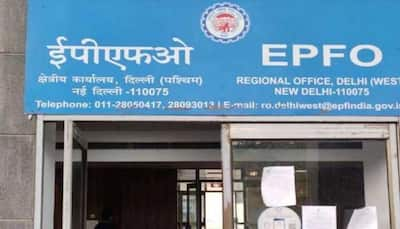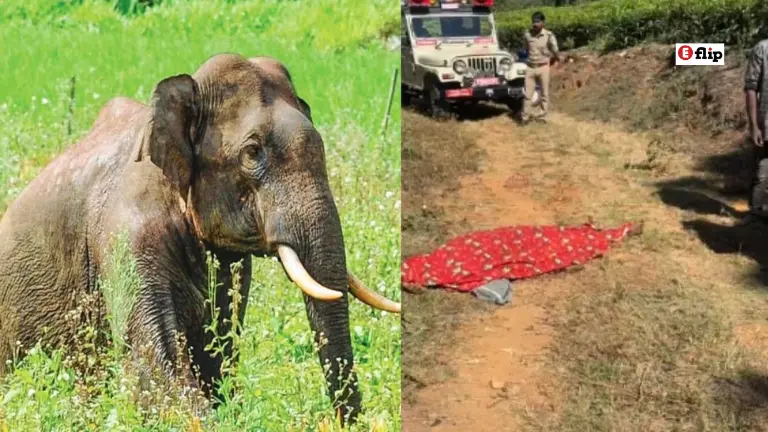The serene forests of Vazhachal, nestled near the majestic Athirappilly waterfalls in Kerala’s Thrissur district, turned into a scene of heartbreak on April 14, 2025. A wild elephant attack Vazhachal 2025 claimed the lives of two tribal residents, Satheesh (34) and Ambika (30), from the Kadar community. The couple, who had ventured into the forest to collect honey, fell victim to a sudden and tragic encounter with a herd of elephants. This incident, the third fatal attack in the region within 48 hours, has left the community reeling and reignited urgent conversations about human-wildlife conflict in Kerala.
As someone who’s always been captivated by Kerala’s lush landscapes, this news hit me hard. The idea that a routine activity like gathering forest produce could end in such tragedy feels like a stark reminder of the delicate balance between humans and nature. In this blog, I’ll walk you through the details of the wild elephant attack Vazhachal 2025, the lives lost, the broader context of human-elephant conflict, and what can be done to prevent such losses in the future. Let’s honour Satheesh and Ambika by understanding their story and the challenges their community faces.
The Incident: A Night of Terror
On Monday evening, around 7:30 p.m., Satheesh and Ambika, residents of Unnathi in Vazhachal’s Sasthampooam tribal hamlet, were deep in the Vanchikadavu forest area. They were part of a small group staying in makeshift huts, a common practice during the honey collection season. For the Kadar community, foraging for honey, wild mangoes, and other forest produce isn’t just a livelihood—it’s a way of life, passed down through generations. But that night, the wild elephant attack Vazhachal 2025 turned their tradition into tragedy.
According to reports, a herd of elephants, possibly led by a tusker locals call Manjakomban, charged unexpectedly. The group scattered in panic, but Satheesh and Ambika couldn’t escape. Their bodies were found the next morning during a search by residents and forest officials, a grim discovery that sent shockwaves through the community. The wild elephant attack Vazhachal 2025 wasn’t just a loss of two lives—it was a blow to a tight-knit tribal settlement already grappling with the dangers of living near the forest.
I can’t imagine the fear they must have felt, running through the dark, with the ground trembling under the elephants’ charge. It’s a chilling reminder of how unpredictable nature can be, especially when humans and wildlife share the same space.
Who Were Satheesh and Ambika?
Satheesh and Ambika weren’t just names in a news report—they were members of the Kadar community, known for their deep connection to Vazhachal’s evergreen forests. Satheesh, 34, and Ambika, 30, were likely parents, siblings, or friends to many in their hamlet. They lived modestly, relying on the forest for sustenance, much like their ancestors. Honey collection, a seasonal ritual, was both a cultural practice and a source of income, tying them to the rhythms of the land.
Thinking about their lives, I’m reminded of stories my grandmother used to tell about her village, where people lived in harmony with nature but always respected its power. Satheesh and Ambika’s loss in the wild elephant attack Vazhachal 2025 feels personal because it highlights the vulnerability of communities who depend on the forest. Their deaths aren’t just statistics—they’re a call to protect those who live closest to nature.
The Context: Rising Human-Wildlife Conflict
The wild elephant attack Vazhachal 2025 wasn’t an isolated incident. Just a day earlier, on April 13, a 20-year-old tribal youth named Sebastian was killed in a similar attack in the same region. These tragedies are part of a growing pattern in Kerala, where human-elephant conflicts have claimed numerous lives. Between 2018 and 2022, wild elephants were responsible for 105 deaths in the state, with Thrissur’s central circle, including Vazhachal, among the hardest hit.
Why are these conflicts escalating? Experts point to several factors:
- Forest Degradation: The 2018 floods altered Vazhachal’s ecosystem, reducing fruit-bearing trees like wild jackfruit and clogging streams, leaving elephants with less food and water. Hungry and thirsty, they venture closer to human settlements.
- Habitat Encroachment: Plantations, like the oil palm farms run by the Plantation Corporation of Kerala, attract elephants, bringing them into conflict with nearby communities.
- Musth Behavior: Locals suspect Manjakomban, the elephant linked to the wild elephant attack Vazhachal 2025, was in musth—a state of heightened aggression driven by hormonal changes.
As I read about these causes, I couldn’t help but feel a mix of sadness and frustration. Elephants aren’t villains—they’re majestic creatures struggling to survive in a shrinking habitat. But for families like Satheesh and Ambika’s, the cost of this conflict is unbearably high.
Community Outrage and Response
The wild elephant attack Vazhachal 2025 sparked immediate outrage. The local community, already mourning Sebastian’s death, organized protests, blocking roads and demanding action from the forest department. The Congress party announced a hartal (strike) in Athirappilly on April 16, calling for:
- Compensation: Financial support for the victims’ families, with the state offering up to ₹10 lakh under Project Elephant.
- Relocation: Safer living arrangements for tribal families in vulnerable areas.
- Prevention: Stronger measures like electric fences, trenches, or radio-collaring problem elephants.
Kerala’s Forest Minister, A.K. Saseendran, responded by ordering an inquiry, describing the deaths as “unusual” and pledging a thorough investigation. The forest department also moved surviving family members to safer locations and restricted tourist access to Athirappilly temporarily.
I remember talking to a friend from Thrissur who said the protests weren’t just about anger—they were about fear. “People feel trapped,” she said. “They love the forest, but they’re scared to step into it.” The wild elephant attack Vazhachal 2025 has exposed a deeper wound: the struggle to coexist with wildlife in a changing world.
Solutions: Can We Prevent Future Tragedies?
The wild elephant attack Vazhachal 2025 underscores the need for long-term solutions. While protests and inquiries are steps forward, they’re not enough. Here are some ideas being discussed:
- Habitat Restoration: Planting fruit trees and clearing streams could keep elephants within the forest, reducing their need to roam into human areas.
- Early Warning Systems: Drones or motion sensors could alert communities to elephant movements, giving them time to stay safe.
- Alternative Livelihoods: Training tribal communities in non-forest-based skills, like handicrafts or eco-tourism, could reduce their dependence on risky foraging.
- Community Involvement: Including tribal leaders like Geetha Vazhachal in planning could ensure solutions respect local traditions.
As someone who’s not an expert but cares deeply about Kerala’s people and wildlife, I believe the answer lies in balance. We can’t vilify elephants or displace communities. The wild elephant attack Vazhachal 2025 is a wake-up call to act with empathy—for both humans and animals.
A Personal Reflection
Writing about the wild elephant attack Vazhachal 2025 has been heavy. I keep picturing Satheesh and Ambika, maybe laughing together as they set out that day, unaware it would be their last. I think of their families, now facing an unimaginable void. Growing up, I’d visit Kerala’s forests with my cousins, thrilled by the chance to spot wildlife. But stories like this remind me that for many, the forest isn’t just a getaway—it’s a lifeline fraught with danger.
This tragedy also makes me question how we talk about progress. Kerala’s tourism and plantations bring wealth, but at what cost to its tribal communities and ecosystems? The wild elephant attack Vazhachal 2025 isn’t just a headline—it’s a story of real people, real loss, and a real need for change.
Looking Ahead
The wild elephant attack Vazhachal 2025 has left scars, but it’s also a chance to rebuild trust between communities, authorities, and nature. As inquiries unfold and solutions are debated, I hope Satheesh and Ambika’s memory drives meaningful action. Their lives mattered, and their deaths should remind us to protect both Kerala’s people and its wildlife.
For now, Vazhachal mourns, but it’s also a place of resilience. The Kadar community will carry on, as they always have, with courage and a deep love for their land. Let’s support them by raising awareness and advocating for a safer future.
The wild elephant attack Vazhachal 2025 is a tragedy we can’t ignore. How do you think we can balance human needs with wildlife conservation? Share your thoughts in the comments—I’d love to hear your perspective. Spread the word by sharing this blog with friends and family to keep the conversation alive. For more stories on Kerala’s challenges and triumphs, subscribe to our newsletter and follow us on social media.










